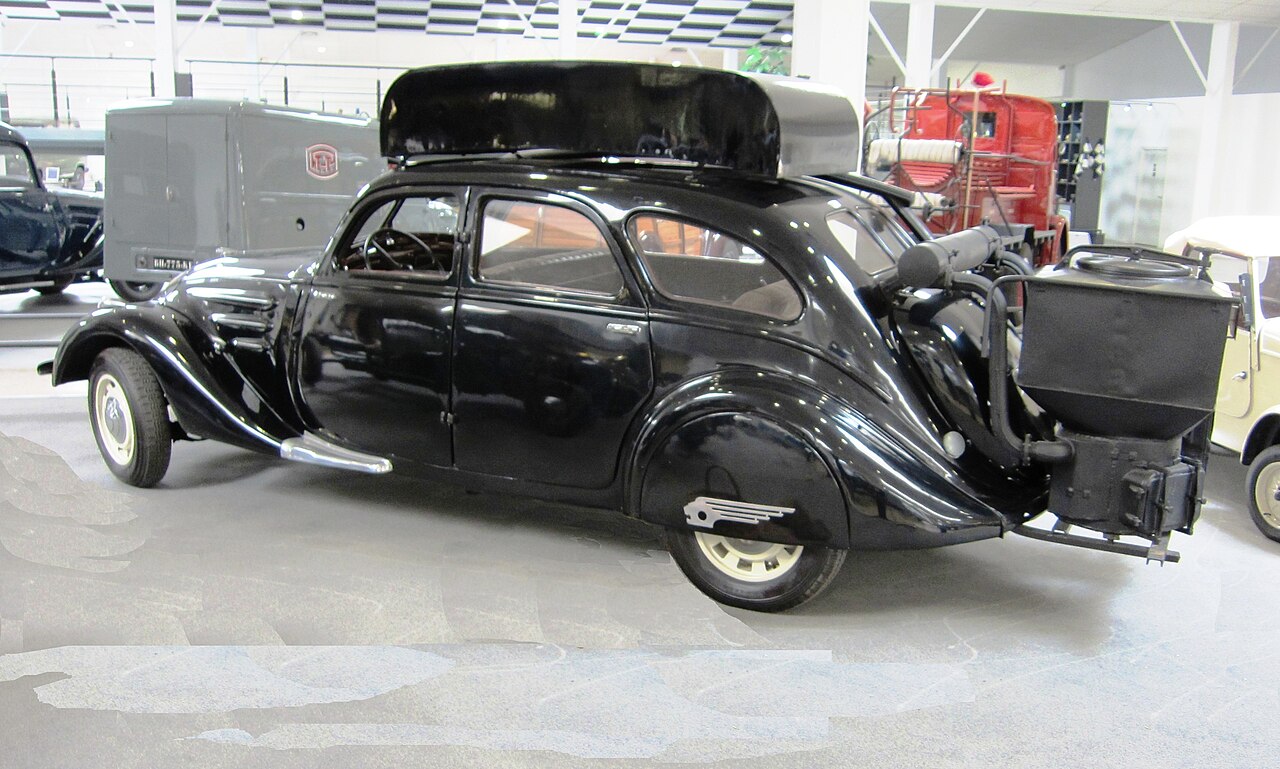
Peugeot debuted the model 402 at the Paris Motor Show on this day in 1935. The vehicle featured a number of innovations, including headlights placed behind the front grille and recessed safety door handles. Peugeot even advertised the car with an available automatic transmission and a diesel engine. When the car launched two chassis lengths were available. A third length later hit the market, resulting in some sixteen different body styles. More than 75,000 402s left the factory over its seven year production run.

During World War II fuel was unavailable for civilian use in vehicles. In 1939 Peugeot was already investigating the possibility of adapting their gas engines to run on gas created by the controlled burning of charcoal. The equipment necessary for this process proved suitable for the long bodied Peugeot 402 without needing to complete excessive bodywork.

Translated from a description by the Musée de l’Aventure Peugeot (Peugeot Museum), “A charcoal burning boiler, able to accommodate 35 kg of charcoal, was mounted on a stout platform at the back of the car. This provided sufficient power for approximately 80 km (50 miles) before more charcoal needed to be taken on board. The controlled burning of the charcoal produced carbon monoxide, known as gazogène, which was captured and transferred in a stout pipe mounted on the outside of the right-hand C-pillar to a roof mounted gas tank. From here another stout pipe mounted on the outside of the right hand A-pillar drew the gazogène down to the engine. Between 1940 and 1944 more than 2,500 Peugeots were equipped with a gazogène fuel system.”




















